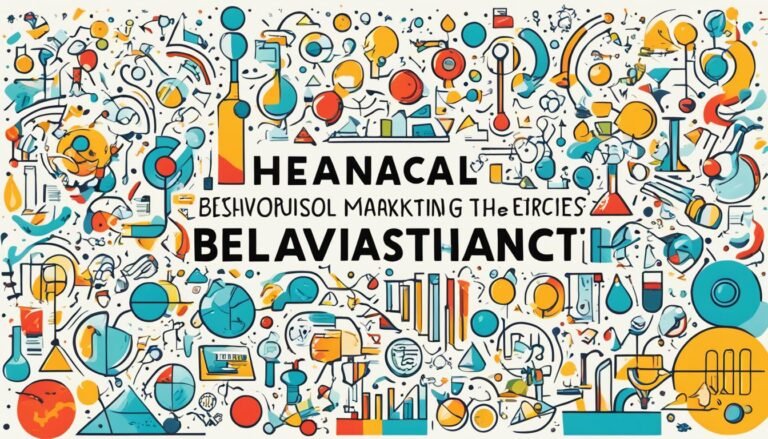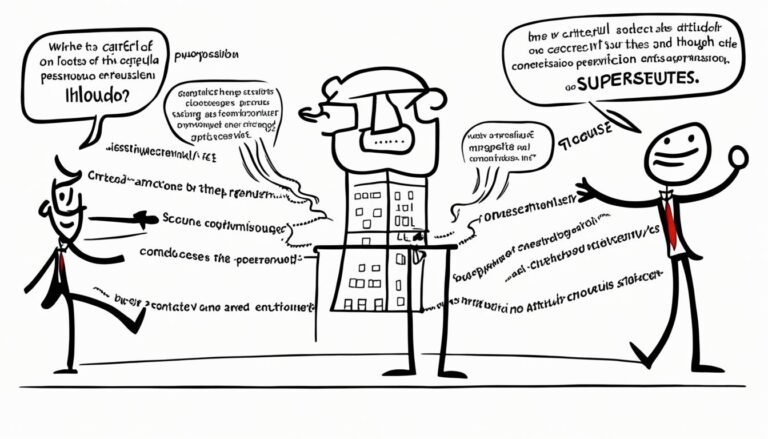Psychology of Content Marketing
Imagine yourself as a content marketer, navigating through the vast ocean of digital platforms, trying to capture the attention and engagement of your target audience. Like a skilled angler, you cast your line into the depths, hoping to hook their interest and reel them in.
But how do you ensure that your content is not just another fish lost in the sea? Welcome to the intriguing world of the psychology of content marketing, where understanding the intricacies of human behavior can be the key to unlocking the secrets of successful content creation.
In this discussion, we will explore the power of storytelling, the influence of emotional triggers, the role of cognitive biases, and much more.
So, prepare to dive deep into the depths of the psychology behind effective content marketing and discover how you can make a splash in the digital realm.
Key Takeaways
- Storytelling is a powerful tool in content marketing that captivates and engages audiences, tapping into their desire for narrative and emotional connection.
- Crafting narratives that resonate with the audience builds emotional connection and trust, helping forge a bond between the brand and customers.
- Emotional triggers such as empathy, curiosity, fear of missing out (FOMO), social proof, and desire for success can be used to create impactful content.
- Cognitive biases, like confirmation bias, availability bias, anchoring bias, authority bias, and social proof, play a role in shaping audience perception and understanding of content.
The Power of Storytelling
The power of storytelling lies in its ability to captivate and engage audiences, making it a vital tool for effective content marketing strategies. The art of storytelling taps into the human desire for narrative and emotional connection. When done right, it can create a lasting impact on your audience, influencing their thoughts, beliefs, and behaviors.
Storytelling is a strategic approach that allows brands to convey their message in a compelling and relatable way. By crafting narratives that resonate with your target audience, you can build a strong emotional connection and establish trust. This emotional connection is crucial for content marketing success, as it helps to forge a bond between your brand and your customers.
When people feel emotionally connected to a story, they're more likely to remember it, engage with it, and share it with others. This is because stories have the power to trigger powerful emotions and create a sense of empathy. By tapping into these emotions, you can create a deeper connection with your audience and make your content more memorable.
Incorporating storytelling into your content marketing strategy allows you to stand out from the crowd and differentiate your brand. It helps you to communicate your unique value proposition and connect with your audience on a deeper level. By mastering the art of storytelling, you can create content that not only engages your audience but also drives meaningful action.
Emotional Triggers in Content
To create truly impactful content, it's essential to understand the emotional triggers that can captivate and resonate with your audience. By incorporating emotional appeal and psychological triggers into your content, you can create a powerful connection with your readers.
Here are five key emotional triggers that can elevate your content and drive engagement:
- Empathy: Tap into the emotions of your audience by understanding their pain points and challenges. Show them that you understand their struggles and offer solutions that can help alleviate their problems.
- Curiosity: Spark curiosity in your audience by presenting them with intriguing questions or teasing them with a captivating headline. This will compel them to click on your content and discover more.
- Fear of Missing Out (FOMO): Create a sense of urgency or exclusivity in your content to trigger the fear of missing out. Limited-time offers, exclusive access, or limited edition products can all entice your audience to take immediate action.
- Social Proof: Leverage the power of social proof by showcasing testimonials, case studies, or user-generated content. This will build trust and credibility, as your audience sees that others have had positive experiences with your brand.
- Desire for Success: Appeal to your audience's aspirations and dreams by showing them how your product or service can help them achieve success. Paint a vivid picture of the benefits they can enjoy and how it will enhance their lives.
Cognitive Biases and Content Consumption
When it comes to content consumption, your perception and persuasion play a crucial role.
Cognitive biases, such as confirmation bias and availability bias, can shape the way you interpret and understand information.
Understanding these biases can help you create content that appeals to your audience's decision-making shortcuts and emotional influences, ultimately leading to more effective marketing strategies.
Perception and Persuasion
Understanding the cognitive biases that influence content consumption is crucial for creating persuasive and impactful content marketing strategies. By leveraging perception biases and employing persuasive techniques, you can effectively capture the attention of your target audience and influence their perception of your brand.
Here are five key considerations to keep in mind:
- Anchoring Bias: Use initial information to frame subsequent content, shaping the audience's perception.
- Confirmation Bias: Create content that aligns with your audience's existing beliefs and values, increasing the likelihood of acceptance.
- Availability Bias: Highlight relevant and easily accessible information, making it more persuasive and memorable.
- Social Proof: Incorporate testimonials, reviews, and endorsements to demonstrate the popularity and trustworthiness of your brand.
- Authority Bias: Position your brand as an industry expert, utilizing credible sources and providing valuable insights.
Decision-Making Shortcuts
By exploring the cognitive biases that influence content consumption, you can strategically leverage decision-making shortcuts to create compelling and influential content marketing strategies.
These decision-making shortcuts, also known as heuristics, are mental processes that allow individuals to make quick judgments and decisions based on limited information. However, it's important to note that heuristics can sometimes lead to errors and biases in decision making.
One common bias is the confirmation bias, where people seek out information that confirms their existing beliefs and ignore contradictory evidence.
Another bias is the availability heuristic, where individuals rely on immediate examples that come to mind when making judgments.
Understanding these decision-making biases can help you tailor your content to appeal to your target audience's cognitive shortcuts, increasing the effectiveness of your content marketing efforts.
Emotional Influence in Marketing
To effectively influence consumer behavior through content marketing, it's crucial to tap into the emotional triggers and cognitive biases that drive content consumption. Emotional branding plays a significant role in shaping consumer behavior, as it creates a strong connection between the brand and the audience's emotions. By leveraging emotions such as happiness, fear, or nostalgia, marketers can create content that resonates deeply with their target audience, leading to increased engagement and brand loyalty.
To further enhance the emotional influence in marketing, it's important to understand and incorporate cognitive biases. These biases, such as the bandwagon effect or loss aversion, can be used strategically to shape consumer perceptions and decision-making processes. By understanding the psychology behind emotional branding and cognitive biases, marketers can create compelling content that truly connects with their audience and drives desired consumer behavior.
The Role of Social Proof
When it comes to content marketing, social proof plays a crucial role in influencing consumer behavior.
Testimonials from satisfied customers can serve as powerful endorsements that sway others to trust and engage with your brand.
Additionally, user-generated content, such as reviews and ratings, can have a significant impact on purchasing decisions by providing real-life experiences and opinions.
Lastly, the power of social validation shouldn't be underestimated, as people tend to follow the crowd and are more likely to trust and engage with content that has been shared and liked by others.
Influence of Testimonials
Testimonials play a crucial role in content marketing, influencing the perception of potential customers and providing social proof of a product's effectiveness. When considering the influence of testimonials, there are several important factors to take into account:
- Ethical considerations: It's essential to ensure that testimonials are genuine and truthful. Misleading or fabricated testimonials can damage a brand's reputation and erode trust with customers. Transparency and authenticity should be prioritized when collecting and displaying testimonials.
- Cultural differences: Different cultures may value testimonials differently. It's important to consider cultural nuances and adapt the use of testimonials accordingly. What may be persuasive in one culture may not have the same impact in another. Understanding cultural differences can help tailor testimonials to resonate with specific target audiences.
- Target audience relevance: Testimonials should align with the target audience's needs and preferences. The testimonials should address specific pain points or desires that potential customers may have, increasing their likelihood of engaging with the content and making a purchase.
- Diverse perspectives: Including testimonials from a diverse range of customers can enhance the credibility and effectiveness of content marketing efforts. People are more likely to trust testimonials from individuals who share similar backgrounds, experiences, or challenges.
- Long-term impact: Testimonials can have a lasting impact on a brand's reputation. It's crucial to consistently monitor and update testimonials to reflect the evolving needs and expectations of customers. Regularly refreshing testimonials can help maintain relevance and effectiveness in content marketing strategies.
Impact of User-Generated Content
Building on the influence of testimonials, user-generated content plays a pivotal role in content marketing by leveraging social proof to establish credibility and drive engagement.
User-generated content refers to any form of content, such as reviews, ratings, comments, or testimonials, created by consumers rather than brands. Its impact on content marketing can't be overstated.
By showcasing the experiences and opinions of real customers, user-generated content provides social proof, which is a powerful psychological concept that influences people's behavior. When potential customers see others like them endorsing a product or service, they're more likely to trust and engage with the brand. This not only increases credibility but also drives conversions and sales.
However, it's essential to consider the ethical implications of user-generated content, such as ensuring authenticity and addressing any potential biases or misleading information. By carefully managing and monitoring user-generated content, brands can harness its power while maintaining integrity and transparency.
Power of Social Validation
Social validation, also known as social proof, is a powerful psychological concept that influences people's behavior and plays a crucial role in content marketing. By leveraging social validation, you can tap into the innate human tendency to look to others for guidance and reassurance.
Here are five key ways in which social validation can influence behavior and enhance the effectiveness of your content marketing strategy:
- Testimonials and reviews: Positive reviews and testimonials from satisfied customers can create a sense of trust and credibility, influencing others to take action.
- Social media engagement: High engagement metrics, such as likes, shares, and comments, serve as social proof and can encourage others to engage with your content.
- Influencer endorsements: Collaborating with influencers who've a strong social following can enhance your brand's credibility and influence their followers' behavior.
- User-generated content: Encouraging users to create and share content related to your brand can demonstrate social validation and encourage others to follow suit.
- Social proof notifications: Displaying notifications of recent purchases or sign-ups can create a sense of urgency and influence others to take similar actions.
Creating a Sense of Urgency
To effectively engage your audience and drive action, it is crucial to create a sense of urgency within your content marketing strategy. By leveraging the psychology of urgency, you can motivate your audience to take immediate action and increase conversions. Creating scarcity and utilizing psychological triggers are effective techniques to create a sense of urgency in your content.
Scarcity is the perception of limited availability, and it taps into people's fear of missing out. By highlighting limited quantities or limited-time offers, you can create a sense of urgency in your audience. This can be done through countdown timers, limited edition products, or exclusive promotions.
Psychological triggers such as fear of loss, fear of missing out, and fear of regret can also be powerful motivators. By emphasizing the negative consequences of not taking action, you can instill a sense of urgency in your audience. This can be achieved through compelling calls to action, time-limited discounts, or limited spots in a program.
Incorporating a sense of urgency into your content marketing strategy can significantly impact your results. The table below provides examples of how you can create a sense of urgency in your content:
| Technique | Example |
|---|---|
| Limited quantities | "Only 5 left in stock!" |
| Limited-time offers | "Offer ends in 24 hours!" |
| Countdown timers | "Sale ends in 3…2…1…" |
| Exclusive promotions | "For members only – limited time offer!" |
Building Trust and Credibility
To build trust and credibility in your content marketing efforts, it's crucial to establish your expertise and showcase social proof.
By positioning yourself as an expert in your field, you demonstrate your knowledge and authority, which helps to instill confidence in your audience.
Additionally, leveraging social proof, such as testimonials or case studies, can provide tangible evidence of your credibility and reliability.
Establishing Expertise
How can you establish expertise and build trust and credibility through content marketing?
Establishing authority and credibility is crucial for content marketing success. By following these strategies, you can effectively showcase your expertise and gain the trust of your audience:
- Consistently provide valuable and accurate information in your content.
- Demonstrate your knowledge and expertise through case studies and real-life examples.
- Use data and research to back up your claims and arguments.
- Engage with your audience by responding to comments and addressing their concerns.
- Collaborate with industry experts and influencers to further establish your credibility.
Social Proof
By showcasing social proof, you can further solidify your expertise and build trust and credibility in your content marketing efforts. Social proof is a powerful tool in influencer marketing and psychological persuasion. It leverages the concept that people tend to follow the actions and opinions of others, especially those they perceive as credible and trustworthy.
When you include testimonials, case studies, and user-generated content in your content marketing strategy, you provide evidence of your expertise and the positive experiences others have had with your brand. This not only helps to overcome skepticism but also helps to establish your credibility as a thought leader in your industry.
Social proof acts as a validation for your content, making it more persuasive and compelling to your target audience. Incorporating this strategy into your content marketing efforts can significantly boost engagement and conversion rates.
Personalization and Customization Techniques
Implementing personalized and customized techniques in content marketing allows businesses to forge deeper connections with their target audience, driving engagement and ultimately boosting conversions. By utilizing data personalization, businesses can create tailored content that resonates with individual customers. This targeted messaging helps to capture their attention and make them feel understood, increasing the likelihood of them taking the desired action.
Incorporating personalization and customization techniques in content marketing has several benefits:
- Improved customer experience: By delivering content that's relevant and valuable to each individual, businesses can enhance the overall customer experience. This increased personalization makes customers feel valued and understood, leading to a stronger connection with the brand.
- Increased engagement: Personalized content grabs the attention of customers and encourages them to engage with the brand. This can be through likes, shares, comments, or even making a purchase. By tailoring content to their preferences and interests, businesses can drive higher engagement rates.
- Enhanced brand loyalty: When customers feel that a brand understands their needs and preferences, they're more likely to become loyal advocates. Personalized content helps to build trust and loyalty, leading to repeat purchases and long-term relationships.
- Higher conversion rates: By delivering targeted messages to customers, businesses can increase the chances of conversion. Personalized content speaks directly to their pain points and offers solutions, making them more likely to take the desired action.
- Competitive advantage: In a saturated market, personalization and customization can set businesses apart from their competitors. By delivering content that's tailored to individual customers, businesses can stand out and capture their attention in a cluttered digital landscape.
The Impact of Visual Content
With the foundation of personalized and customized techniques established, it's crucial to explore the profound impact that visual content has on content marketing strategies.
Visual content is a powerful tool that taps into the psychology of visual storytelling, allowing brands to connect with their audience on a subconscious level. The human brain is hardwired to process visual information quickly and efficiently, making it an effective way to capture attention and convey messages.
Visual content has the ability to evoke emotions, trigger memories, and create associations in ways that text alone cannot. By leveraging visual elements such as images, videos, and infographics, brands can tell compelling stories that resonate with their target audience.
The psychology of visual storytelling lies in the fact that visuals have the power to communicate complex ideas and concepts in a simple and digestible format.
Moreover, visual content has a subconscious impact on consumers' perception of a brand. Research has shown that visuals elicit emotional responses that influence decision-making. When people see visually appealing content, they're more likely to perceive a brand as trustworthy, credible, and reliable. This subconscious impact is essential for building brand awareness and loyalty.
Harnessing the Fear of Missing Out (FOMO)
To effectively engage your audience and drive action, tap into the powerful psychology of FOMO by creating compelling visual content that instills a sense of urgency and exclusivity. Exploiting scarcity and leveraging exclusivity are key strategies in harnessing the fear of missing out.
Here are five ways to effectively implement FOMO in your content marketing:
- Limited-time offers: Create promotions with a countdown timer to create a sense of urgency and encourage immediate action.
- VIP access: Offer exclusive content or early access to new products or services to make your audience feel special and privileged.
- Social proof: Highlight testimonials, reviews, or user-generated content to show that others are already benefiting from your offerings, creating a fear of missing out on the benefits.
- Behind-the-scenes content: Give your audience a sneak peek into your processes, events, or collaborations that aren't accessible to the general public, making them feel like insiders.
- Influencer collaborations: Partner with influential individuals in your industry to create a buzz and make your audience feel like they're part of an exclusive community.
The Science of Viral Content
Exploiting the fear of missing out can be a powerful tool in your content marketing strategy. Understanding the science behind viral content can take your campaigns to the next level. When it comes to creating viral content, there are certain psychological triggers that can greatly increase its chances of spreading like wildfire.
One of the key psychological triggers is emotion. Viral content often evokes strong emotions such as awe, amusement, or even anger. These emotions capture the attention of your audience and make them more likely to share the content with others. Additionally, content that taps into people's desires, aspirations, or fears can also go viral. By understanding what motivates your audience, you can create content that resonates deeply with them and compels them to share it.
Another important aspect of viral content is its shareability. People are more likely to share content that's relatable, useful, or entertaining. This means that your content should be easily digestible, visually appealing, and provide value to your audience. Incorporating elements such as humor, storytelling, or practical tips can make your content more shareable.
Furthermore, viral content strategies often involve leveraging social proof and influencers. People are more likely to engage with content that has been endorsed or shared by someone they trust or admire. By collaborating with influencers or encouraging user-generated content, you can increase the reach and virality of your campaigns.
Conclusion
In conclusion, content marketing is a powerful tool that taps into the psychology of human behavior. By utilizing storytelling, emotional triggers, cognitive biases, social proof, urgency techniques, personalization, and visual content, marketers can strategically engage their audience and drive desired actions.
Just like a skilled conductor leading an orchestra, content marketers orchestrate a symphony of psychological techniques to captivate and resonate with their target audience, creating a harmonious connection that compels them to take action.







